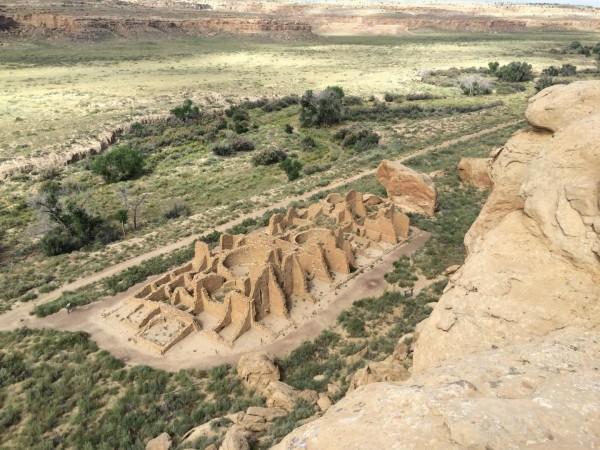
Do you know how the ancient North Americans survived in the northwestern New Mexico's bone-dry desert for centuries? Well, we might not know but the researchers think they have an idea of how it was possible.
A multidisciplinary team of researchers from the University of Cincinnati reached a conclusion that Chaco Canyon's sandy soils didn't have too much salt in it; so, it was possible to grow crops, like maize, beans and squash, there. These crops kept those 1,200 people alive at this desert during its most productive years.
It has been a long debate as to whether these people, who resided at here from 800 to 1300 AD, could grow their crops themselves or depended partially or completely on imported foods. Some earlier researches had concluded that the soil of this desert was too saline to grow anything; so the Chaco Canyon people could not have survived without imported foods.
There were also some researches that said that since Chaco Canyon had religious importance, it only had a few permanent residents, who survived on the foods and other supplies brought there by a huge number of visitors making pilgrimages.
![University of Cincinnati doctoral student Jon-Paul McCool works at an excavation site at Chaco Canyon. [Nicholas Dunning/UC] chaco canyon](https://data1.ibtimes.co.in/en/full/692505/chaco-canyon.jpg?h=450&l=50&t=40)
Now, the recent soil analysis conducted by the experts from the University of Cincinnati suggests that the most important obstacle here for agriculture was irrigation. That's where those ancestral Puebloans proved to have particularly clever farming skills and also insightful land management, opined Jon-Paul McCool from the University of Cincinnati, who is the lead author of the study, published in PLOS ONE.
"The major limitation is water. You couldn't rely on rain for field agriculture. You'd have to gather and control water, which we know people in the region did," he said.
Researchers have found out that Chaco Canyon has proofs of fully built canals. They were essentially water-diversion channels, which were specially designed to direct the rainwater to the farm fields.
According to a geography professor from UC's McMicken College of Arts and Science, Nicholas Dunning, the study could conclude that the soil of the desert was capable of supporting agriculture in Chaco Canyon and the irrigation canals, discovered at the area, were built by the ancient North Americans in, at least, the eighth century.
"The evidence is compelling that they produced most of the food that they consumed in Chaco Canyon and devised sophisticated irrigation strategies to do it," he said.
"My experience in traditional societies is farmers and agricultural populations are very risk-averse. So you tend to think in ways of making sure you have enough to eat yourself each year along with seed for next year," Dunning added.
UC professor emeritus Vernon Scarborough said that the research work at Chaco Canyon shows the importance of embracing low-tech methods in order to accommodate life on Earth.
"A greater understanding of just how these ancient, 'primitive' systems adapted and function merits a thoughtful assessment given the social and environmental stress we face globally today," he said.
![University of Cincinnati geography professor Nicholas Dunning and UC research associate Samantha Fladd talk about a core sample taken from Chaco Canyon, N.M. [Joseph Fuqua II/UC Creative Services] chaco canyon](https://data1.ibtimes.co.in/en/full/692506/chaco-canyon.jpg?h=450&l=50&t=40)

















